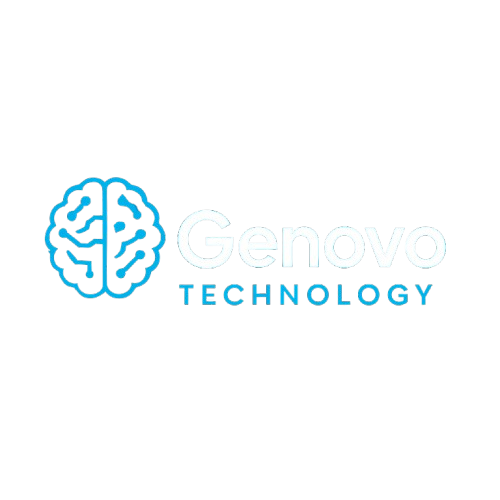Introduction
SAAS Development is the process of building software that users can access online. There are no downloads or installations required, just a web browser. Netflix is the way Canva creates graphics, and HubSpot manages your marketing. Behind every seamless user journey is a development process full of feature prioritization and technical decisions.
SAAS isn’t just a buzzword. SAAS is a great alternative to traditional software because it is flexible, quicker to launch, and more efficient. SAAS development is now a necessity, whether you’re starting a new business, expanding your existing product, or looking to move your service into the cloud. This is the right move.
For more information visit our home page.

Benefits of SAAS Development
SAAS’s simplicity is appealing to both users and developers. SAAS platforms are a better alternative to one-time purchases and cumbersome installations.
- Cost-effective: No need to burn money on physical infrastructure.
- Scalable: Handle more users easily without rebuilding the backend.
- Accessible: Use it anywhere and on any device.
- Auto-updating: Push updates without interrupting users.
Here’s the best part: revenue doesn’t depend on a single purchase. Subscription models provide a steady stream of income. The SAAS model is more predictable, and it makes scaling easier.
Use cases and types of SAAS products.
SAAS doesn’t fit all. It is used across industries to solve wildly different issues with the same delivery method.
- Think of B2B SaaS: Think Slack. Tools to help businesses sell, communicate, and operate.
- Vertical SAAS: Tools for specific niches, such as software for dental clinics and gym management systems.
- Analytics & Data Platforms – Helping teams transform raw data into insights.
- CRM & Marketing Tools: HubSpot, Mailchimp, ActiveCampaign–driving lead generation and customer relationships.
- ERP Systems : Cloud-based enterprise resource management tools such as SAP Business One and NetSuite.
You probably use several of these without even realizing it.
SAAS Development Process: Step-by-Step Guide
Structure is required to get from an idea into a SAAS product. Here is a quick overview of the main stages:
- Validate Your Idea
- Talk to users. What problem do you solve? What are people paying for?
- Define your product vision.
- Write down the features, user flows, and roadmap. Concentrate only on core functionality.
- Build your MVP
- Do not aim for perfection. Build a Minimum-Viable Product (MVP) that solves the problem at its core. Ship early, receive feedback, and iterate quickly.
Genovo Technology also providing more services
Choosing the Right Tech Stack & Architecture
The tech stack you use will affect how quickly and easily your product can be built, as well as how secure it is.
- Frontend: React, Vue.js, or Angular for fast, responsive interfaces.
- Frontend Depending on the developer’s skill level and project speed, choose from Node.js or Django.
- Database: PostgreSQL or MongoDB, depending on the data you need.
- Architecture: Multi-tenant architecture allows users to share resources without sacrificing safety.
- Cloud Native: Deploy to AWS, Google Cloud, or Azure for global availability.
- API first: Your app will be easier to integrate on other platforms.
Assembling Your SAAS Development Team
To get started, you don’t require a team of 50 people. You will need to fill a few key positions:
- Product Strategy: Aligns features with user needs.
- UI/UX designer: Makes sure your app isn’t just functional, but also enjoyable.
- Developers: Frontend and backend engineers who are able to turn their vision into code.
- QA specialist: Tests before users and finds bugs.
- DevOps: Manages deployments, servers, and scaling.
Can’t hire locally? Working with freelancers or outsourcing can help you launch faster without spending a fortune.
Pricing strategy & Monetization models
Price is too high–you scare away users. You won’t grow if you price too low. Offer the following to find your sweet spot:
- Freemium plans: Let users try your product before committing.
- Subscription Tiers: Offer monthly or yearly pricing with increasing features.
- Pricing based on usage: Charges based on the amount of value used (e.g., per API call or storage).
Track your key numbers:
- CAC (Customer Acquisition Cost)
- CLV (Customer Lifetime Value)
- MRR (Monthly Recurring Revenue)
- Churn rate (how many users leave)
Quality Assurance Testing & Security Considerations
Test everything before going live – from logins to payment. Use:
- Automated Testing, Performance, and Regression Testing
- Security standards like GDPR, HIPAA, or SOC 2
- Monitoring of uptime using tools such as Datadog or Sentry
Before you reach 10K users, make sure to back up your data often and secure it.
Launching Your SAAS Product and Growth Tactics
Launching isn’t the finish line—it’s the starting point.
Beta Testing: Open up access to a small group first. Watch how they use it. Tweak as needed.
Feedback Loops: Use tools like Hotjar or in-app surveys to gather user insights.
Content Marketing: Blogs, videos, SEO-optimized landing pages bring organic traffic.
Product-Led Growth (PLG): Let the product market itself with shareable features or referral perks.
Partnerships & Influencer Outreach: Spread faster by tapping into existing audiences.
Challenges and How to Overcome Them
Let’s be honest—SAAS development isn’t smooth sailing.
Feature Creep: Focus on solving one clear problem first.
Missed Deadlines: Set realistic sprints and get stakeholder buy-in early.
Customer Churn: Keep users engaged with great onboarding, helpful updates, and real value.
Scaling Issues: Don’t wait until you’re crashing. Build with growth in mind from day one.
Trends & Future Outlook in SAAS Development
Here’s what’s reshaping SAAS as we head into 2025:
AI and Machine Learning: Automate workflows, deliver smarter analytics.
Vertical SAAS: Super-targeted tools for specific industries.
No-Code/Low-Code Platforms: Faster prototyping, less dependence on dev teams.
Hyper-Personalization: Using user data to tailor the experience in real time.
Security-as-a-Feature: Building trust through transparent data policies and compliance.
Comparison Table: Traditional Software vs. SAAS Development
| Feature | Traditional Software | SAAS Development |
|---|---|---|
| Installation | Local setup on devices | Cloud-based, no installation |
| Updates | Manual by users | Auto-updated centrally |
| Payment Model | One-time purchase | Recurring subscription |
| Accessibility | Device-restricted | Accessible from any device, anywhere |
| Maintenance | User-managed | Vendor-managed |
| Scalability | Harder to scale | Easily scalable with cloud infrastructure |
| Time to Launch | Slower | Faster with MVP and agile methodology |
| Upfront Cost for Users | Higher | Lower (monthly/yearly pricing) |
Frequently Asked Questions (FAQs)
Q1. What makes SAAS development different from traditional software development?
SAAS development focuses on building cloud-based applications accessible via a web browser, with recurring revenue models and centralized updates, unlike traditional software that requires local installations.
Q2. How long does it take to develop a SAAS product?
It typically takes 4–12 months depending on complexity, feature set, team size, and whether you’re building an MVP or a full product.
Q3. What are the biggest technical challenges in SAAS development?
Scalability, multi-tenant architecture, uptime reliability, and data security are top challenges developers face.
Q4. Is SAAS development suitable for small businesses and startups?
Absolutely. Many startups start with SAAS because it reduces operational costs and makes scaling easier over time.
Q5. Can I monetize a SAAS product with a freemium model?
Yes, freemium models are common in SAAS. You offer basic features for free, and monetize advanced functionality via paid plans.
Q6. How do I protect user data in my SAAS app?
Use end-to-end encryption, secure authentication (OAuth2, MFA), and comply with GDPR, HIPAA, or SOC 2 regulations depending on your audience.
Q7. What metrics should I track after launching a SAAS product?
Keep an eye on churn rate, monthly recurring revenue (MRR), customer acquisition cost (CAC), and customer lifetime value (CLV).
Conclusion
SAAS development doesn’t need to feel overwhelming. With the right strategy, tools, and team, you can launch a product that grows with your users. If you’re ready to bring your idea to life—or scale your existing product—Genovo Technology is ready to help. We specialize in custom SAAS development that’s lean, scalable, and built for impact.

One Response